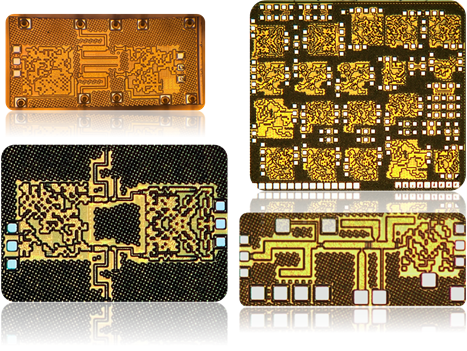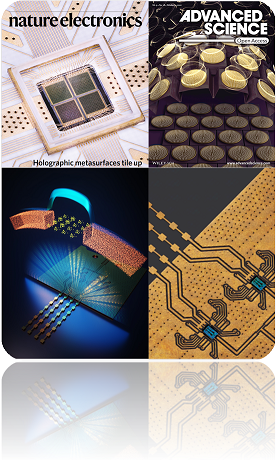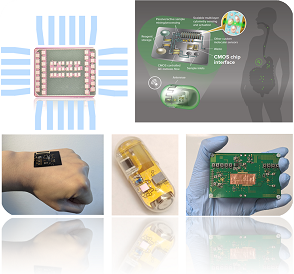Copyright © 2018 - All Rights Reserved - Domain Name
Template by OS Templates
We are interested in integrated chip-scale and hybrid interfaces operating across a broad range of spectrum (DC-to-Terahertz-to-optics) in the diverse application space of intelligent communication and sensing. The domain spans from future wireless connectivity and access, robotics and autonomy, smart cities and sustainability to low-cost point-of-care diagnostics and healthcare. While the application space is extensive, there is an underlying unifying principle--at the fundamental physics of these sensing interfaces, information is often embedded in the electromagnetic (EM) fields through spectrally sensitive nature of their interaction with the real world. Our research broadly on enabling a new class of electromagnetic-to-information systems that operate across the wide diversity of the spectrum (DC-to-Terahertz-to-optics), and across a wide range of physical interfaces, from bio-samples to complex and dynamically changing scattering scenes for communication, imaging and sensing.

As we lay out the vision for these future sensing and communication technologies that will be multi-functional, adaptive and operate over a broad spectral range, it is important to ask whether we have the design methodologies to explore this space? For high-frequency systems, for example, electromagnetic structures and their co-design with circuits play a critical role. The conventional design process typically starts from a parametrized model of such a structure with pre-selected topology that is subsequently optimized for the desired scattering parameters through time-consuming parameter sweeps, ad-hoc optimization algorithms or prior expert experience. There is no reason to believe that such optimized topologies, that are modular, regular and limited to a narrow set of tuning parameters, are close to the `globally optimal' performance in the space of all possible EM structures. In this pursuit, we explore design spaces where the emergent architecture can look very non-intuitive, but successfully realizes performance non-achievable (or at least extremely challenging) with classical design methods.

Wireless communication and sensing are undergoing fundamental changes as spectral ranges in the mm-Wave and terahertz are opening up (for 5G and beyond) with orders of magnitude larger spectrum than we ever had access to. These new swathes of spectrum has the capability to serve as the back-bone for the next-generation of wireless networks, and intelligent sensing systems. We are broadly interested in innovative architectures that allow incorporation of new functionalities that will make them operate in the complex dynamically changing environment---these include spectral agility, programmability, security, and others. The effort is highly multi-disciplinary where the innovations typically come from abstract mathematical and physical concepts, often across the layers of abstraction, before they translate to the chip and system design.

The importance of point-of-care (POC) bio-molecular diagnostics capable of rapid analysis has become abundantly evident after the outbreak of the Covid-19 pandemic. Chip-scale end-to-end bioelectronic system requires addressing all aspects of this complex pipeline---from front-end sample processing, right from the biosample collection and manipulation through complex microfluidics, biochemistry to massively multiplexed sensing and actuation capabilities. We are interested in all aspects of this broad vision including scalable CMOS-chip driven electrokinetic driven microfluidics, cellular and bio-molecular sensing, autonomous closed-loop wearable healing systems (such as smart wound healing), to pill-based bioelectronics with in-situ analysis capabilities.
Copyright © 2018 - All Rights Reserved - Domain Name
Template by OS Templates